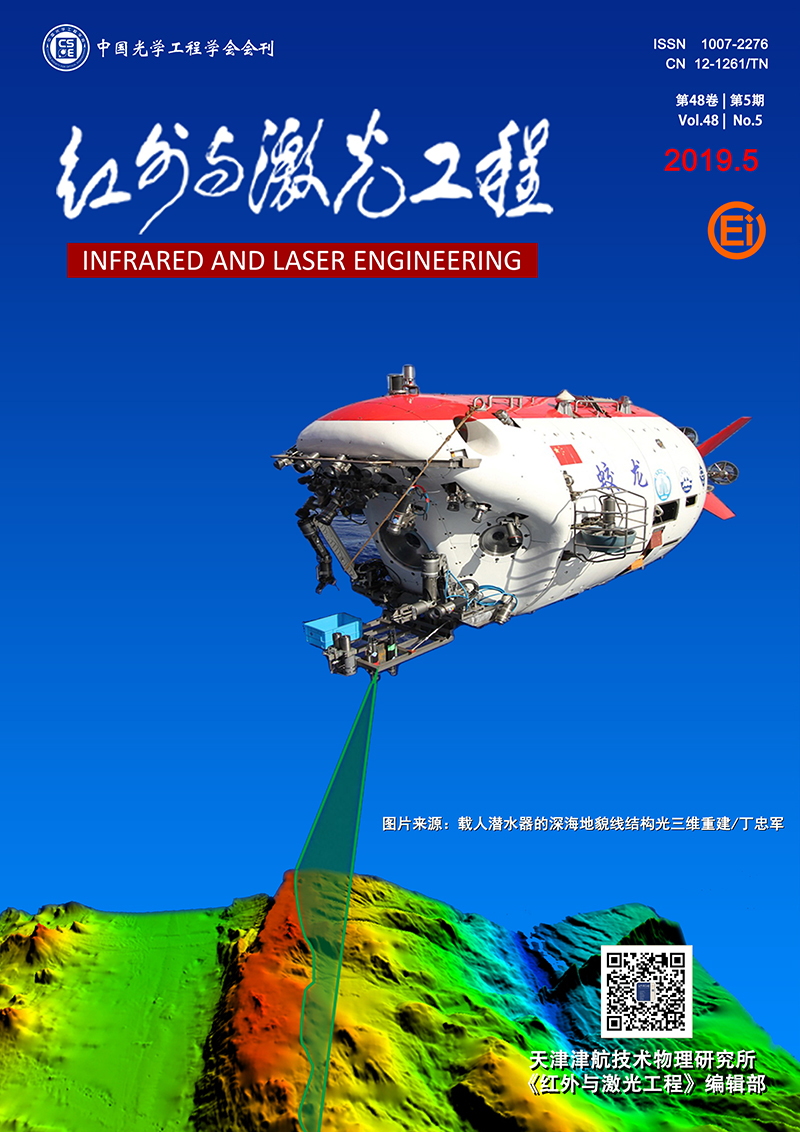|
[1]
|
Vercruysse D, Dusa A, Stahl R, et al. Three-part differential of unlabeled leukocytes with a compact lens-free imaging flow cytometer[J]. Lab on A Chip, 2015, 15(4):1123-1132. |
|
[2]
|
Enejder A M K, Johannes S, Prakasa A, et al. Influence of cell shape and aggregate formation on the optical properties of flowing whole blood[J]. Applied Optics, 2003, 42(7):1384-1394. |
|
[3]
|
Lin Xiaogang, Zhu Hao, Weng Lindong, et al. Light scattering from lung cancer cells and its Polystyrene microsphere models[J]. Infrared Laser Engineering, 2017, 46(10):1033001. (in Chinese) |
|
[4]
|
Hu Chunguang, Zha Ridong, Ling Qiuyu, et al. Super-resolution microscopy applications and development in living cell[J]. Infrared Laser Engineering, 2017, 46(11):1103002. (in Chinese) |
|
[5]
|
Li Huahui, Li Yanqiu, Zheng Meng. Scattering characteristics of epithelial tissues by sphere-rotation ellipsoid model[J]. Infrared Laser Engineering, 2018, 47(2):0217004. (in Chinese) |
|
[6]
|
Eremina Elena. Light scattering by an erythrocyte based on discrete sources method:Shape and refractive index influence[J]. Journal of Quantitative Spectroscopy Radiative Transfer, 2009, 110(14-16):1526-1534. |
|
[7]
|
Han Y, Gu Y, Zhang A C, et al. Review:imaging technologies for flow cytometry[J]. Lab Chip, 2016, 16(24):4639-4647. |
|
[8]
|
Tomasek K, Bergmiller T, Guet C C. Lack of cations in flow cytometry buffers affect fluorescence signals by reducing membrane stability and viability of Escherichia coli strains[J]. Journal of Biotechnology, 2018, 268:40-52. |
|
[9]
|
Zhou Minghui, Liao Chunyan, Ren Zhaoyu, et al. Bioimaging technologies based on surface-enhanced Raman spectroscopy and their applications[J]. Chinese Optics, 2013, 6(5):633-642. (in Chinese) |
|
[10]
|
Lam C C, Leung P T, Young K. Explicit asymptotic formulas for the positions, widths, and strengths of resonances in Mie scattering[J]. Journal of the Optical Society of America B, 1992, 9(9):1585-1592. |
|
[11]
|
Zharinov A, Tarasov P, Shvalov A, et al. A study of light scattering of mononuclear blood cells with scanning flow cytometry[J]. Journal of Quantitative Spectroscopy Radiative Transfer, 2006, 102(1):121-128. |
|
[12]
|
Lugovtsov Andrei E, Priezzhev Alexander V, Nikitin Sergei Yu, et al. Light scattering by arbitrarily oriented optically soft spheroidal particles:Calculation in geometric optics approximation[J]. Journal of Quantitative Spectroscopy Radiative Transfer,2007, 106(1-3):285-296. |
|
[13]
|
Gualda E J, Pereira H, Nikitin Sergei Yu, et al. Three-dimensional imaging flow cytometry through light-sheet fluorescence microscopy[J]. Cytometry Part A the Journal of the International Society for Analytical Cytology, 2017, 91(2):144-151. |
|
[14]
|
Lugli E, Roederer M, Cossarizza A. Data analysis in flow cytometry:The future just started[J]. Cytometry A, 2010, 77A(7):705-713. |
|
[15]
|
Zhang L, Qin Y, Li K X, et al. Light scattering properties in spatial planes for label free cells with different internal structures[J]. Optical Quantum Electronics, 2015, 47(5):1005-1025. |
|
[16]
|
Lee Jeonghoon. Effect of structure factor on aggregate number concentration estimated using Rayleigh-Debye-Gans scattering theory[J]. Optica Applicata, 2011, 41(3):519-525. |
|
[17]
|
Cheng Jingmeng, Yang Li, Zhou Wei, et al. Analysis on influence parameters of cell sorting using optical pressure difference technology[J]. Optics Precision Engineering, 2017, 25(8):2029-2037. (in Chinese) |
|
[18]
|
Yang Jing, Guo Yongcai, Gao Chao. Light scattering and Monte Carlo simulation of humans erythrocytes[J]. Optics Precision Engineering, 2004, 12(z1):198-203. (in Chinese) |
|
[19]
|
Gilev K V, Yurkin M A, Chernyshova E S, et al. Mature red blood cells:from optical model to inverse light-scattering problem[J]. Biomedical Optics Express, 2016, 7(4):1305. |
|
[20]
|
Wang Yawei, Han Guangcai, Wu Dajian, et al. Study on the relation between the shape and scattering distribution of cells[J]. Laser Journal, 2006, 27(5):63-64. (in Chinese) |
|
[21]
|
Wang Yawei, Cai Lan, Wu Dajian, et al. Influencing upon light scattering for variety of cell's body and cytoplast's thickness in measurement of their size distribution[J]. Chinese Journal of Lasers, 2005, 32(9):1300-1304. (in Chinese) |
|
[22]
|
The Scott Partnership. Optical simulation software[J]. Nature Photonics, 2010, 4(4):256-257. |
|
[23]
|
Wyrowski F, Zhong H, Zhang S, et al. Approximate solution of Maxwell's equations by geometrical optics[C]//Spie Optical Systems Design, 2015. |
|
[24]
|
Bu Ming, Hu Shuangshuang, Tao Zhaohe, et al. Scattering characteristics of leukocytes on polarized light and relationship between scattering characteristics and cell structure[J]. Chinese Journal of Lasers, 2017, 44(10):051701. (in Chinese) |
|
[25]
|
Ji Y, Liang M, Hua T, et al. Characterization method for 3D substructure of nuclear cell based on orthogonal phase images[J]. Biomed Res Int, 2015, 2015(3):1-8. |
|
[26]
|
Wang Y W, Bu M, Shang X F, et al. Light scattering models of white blood cells and back-scattering distribution analysis of them[J]. Optica Applicata, 2011, 41(3):527-539. |









 DownLoad:
DownLoad: